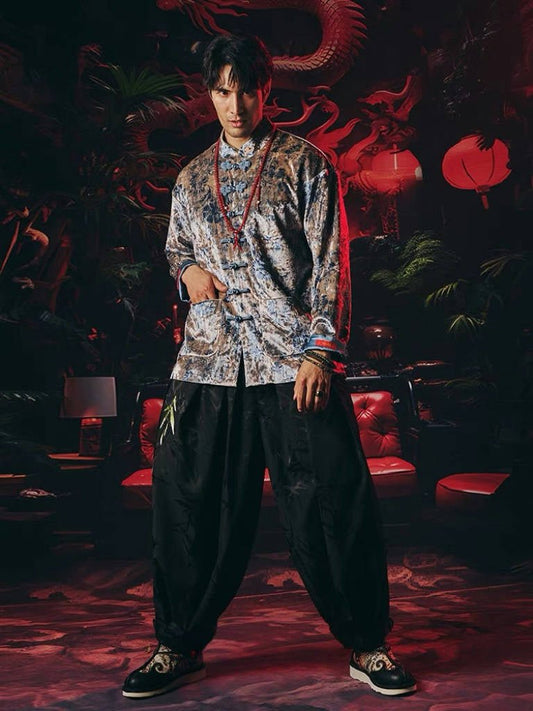
Hanfu Poqun: What is Poqun?
Делиться
Recently, some buyers have asked me: What is poqun? Maybe it has something to do with its English expression. Many people don't quite understand poqun. So today, I'll briefly explain what poqun is. As a unique style of skirt in the Hanfu system, poqun carries rich historical connotations and cultural values.
The origin of poqun can be traced back to the Pre-Qin period. At that time, due to the limitations of textile technology and clothing production techniques, people cut fabrics into multiple pieces and then sewed them together to make skirts. This kind of stitched skirt is the prototype of poqun. The character "po" (破) comes from the feature that it is stitched together by multiple pieces of fabric. In the early days, poqun was mostly worn by working people because it was easy to make, highly practical, and convenient for daily work.The commonly mentioned six - poqun and eight - poqun are quite easy for everyone to understand.
In the Han Dynasty, with the progress of textile technology, the production process of poqun became more and more refined. During this period, poqun was not only widely popular among the common people but also gradually entered the clothing system of the aristocratic class. In terms of style, the hemlines of Han Dynasty poqun gradually became wider, and when walking, they were elegant and flexible, showing an elegant temperament. When wearing it, it was often paired with curved or straight robe deep clothes. The upper garment was tucked into the skirt and fixed with a belt, showing a simple and grand style.
During the Wei, Jin, and Southern and Northern Dynasties, although society was turbulent, culture and art flourished, and clothing styles were also deeply influenced. Poqun presented a unique style during this period. The skirt body became wider and wider, and the design with multiple pleats became a popular trend. People often paired poqun with large-sleeved shirts. The wide robes and large sleeves complemented the elegant poqun, creating an otherworldly and unrestrained Wei and Jin demeanor.
In the Tang Dynasty, with its powerful national strength and inclusive and open culture, poqun reached a new peak of development. At this time, poqun was brightly colored, with exquisite patterns, and the production process reached an unprecedented height. High-waisted poqun became a fashion trend. Paired with short ru tops or tops that exposed the chest and arms, it showed the grace and confidence of women. This kind of dressing style was not only popular in the imperial court but also widely spread among the common people, becoming one of the representatives of Tang Dynasty clothing culture.
There are obvious differences between poqun and mamianqun, baidiequn, sanjianqun, and ruqun. Mamiqun has a total of four skirt gates, two of which overlap. The middle skirt gate is smooth, and the two sides are pleated, with a dignified and elegant style. Baidiequn has many fine pleats at the skirt waist, and the whole is relatively Sense of relief, Sanjianqun is usually stitched together by three pieces of fabric, forming three obvious pleat marks. Ruqun is a general term for upper and lower skirts, and poqun is just one of the lower skirt styles. Poqun is distinguished from other skirt styles by its unique structure of being stitched together by multiple pieces. In terms of wearing effect, it has more layering and flexibility.
Poqun has had a profound impact on later clothing. Its stitching production method has provided inspiration for many later skirt styles, and similar stitching elements can also be seen in some ethnic minority costumes. At the same time, the elegant and flexible style shown by poqun has also influenced the pursuit of aesthetics and wearing comfort in later clothing. In the modern Hanfu revival movement, poqun is also highly favored. In addition, poqun is very suitable for daily wear. It matches well with various styles of clothes, so poqun has become the choice of many Hanfu enthusiasts.








